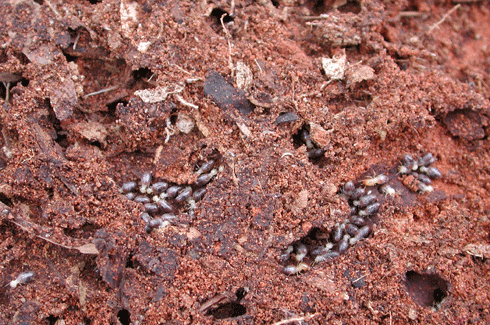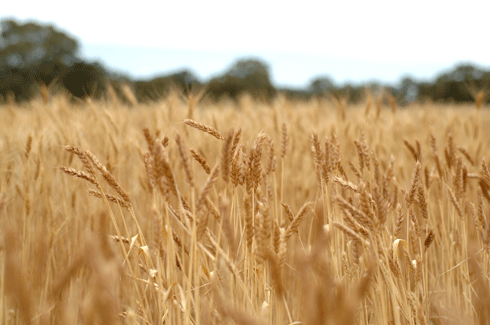
|
Published: 4 July 2011
Ants and termites: our dryland farm heroes
Recent research on the role of ants and termites in dryland cropping environments suggests that they may be the unsung heroes of our marginal agricultural soils.

|
|
Termites may become a useful land management tool for farmers. Credit: Patrick Gleeson, CSIRO
|
The three-year study, published in Nature Communications, looked at the impact of ants and termites on wheat yields of a dryland (non-irrigated) farm in Western Australia. Low rainfall and high temperatures put the region at the north?eastern limits of wheat production in the state. The study found that the presence of ants and termites on farmland under low tillage – but otherwise conventional agricultural management – was associated with an average 36 per cent higher wheat crop yield.
Lead author Dr Theo Evans, formerly of CSIRO, believes there are two main reasons for the increase in yield.
‘First, tunnels dug by ants and termites let more rain penetrate deeper into the soil where plants can access it, which also reduces runoff and evaporation,’ he says. ‘Second, the insects improve soil nitrogen, probably because termites have nitrogen-fixing gut bacteria, functionally similar to those in the root nodules of legumes, which could help reduce fertiliser costs.’
Dr Evans explains that ants and termites have been the ‘poor cousins’ of earthworms in terms of research into their agricultural potential.
‘The role of earthworms in building soil and soil health has long been recognised and studied; work originally done by Charles Darwin turned them from pests into good guys. One of the last things Darwin did in his life was to rehabilitate earthworms. But, earthworms really only survive in wet places. In drier and hotter habitats, ants and termites appear to replace earthworms as soil ecosystem engineers.’
Cultivation tends to reduce soil ‘macrofauna’ populations, which include earthworms, termites and other hard-bodied animals such as insects, millipedes, centipedes and spiders.
Given this tendency, the choice of a study farm that uses a no-till management strategy, is close to remnant bushland, and has not been cleared until recently, was crucial.

|
|
Ants and termites in soil can increase wheat crop yields. Credit: Carl Davies, CSIRO
|
‘The farm that I worked on was pretty big, but it had only been cleared relatively recently and it was surrounded by natural bush on three sides,’ says Dr Evans. ‘About ten years ago, the farmer I was working with decided to stop tilling, control traffic [heavy machinery restricted to traffic zones on the farm to reduce soil compaction] and reduce his pesticide use.
‘The ants and termites probably only needed a relatively short period of time to recolonise the soil [after clearing], because there was remnant native vegetation. I think it will be different for places that have less natural vegetation and that have been under cropping for a longer period of time,’ Dr Evans explains.
The study’s findings open up some exciting avenues for research into no-till cropping, which has been used in Australia for 20 years or so. In many cases, farmers try low tillage, but according to Dr Evans, they ‘get some benefit but not all the benefit, so they’re not so excited about it’.
Researchers have not always been able to provide answers to the yield conundrum, partly because ‘not everyone measures everything they can, so you don’t know whether or not one factor or another might be causing the yield differences between different no-till farms,’ Dr Evans says. However, he thinks that Australian researchers are now in a position to take a new tack.
‘We can try to guess where ants and termites might be contributing positively to yield now, and find high-yield [compared to conventional agriculture], no-till farms and low-yield no-till farms in those areas. Then we can survey to see what insects are in the soil.
‘If I’m right, then you’d expect the no-till farms with high yields to have richer soil fauna than low-yield, no-till farms in the same area. Then, you might be able to set yourself up for an experiment to add these insects. And no one’s ever tried that.’
More information
Paper reporting on study published in Nature Communications: www.tinyurl.com/4cn3cu8
Ants and termites on Northern Australian rangeland soils: www.tinyurl.com/6allybo



